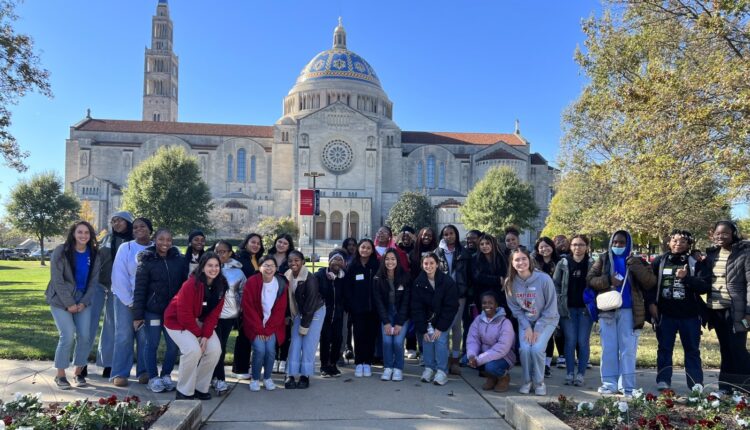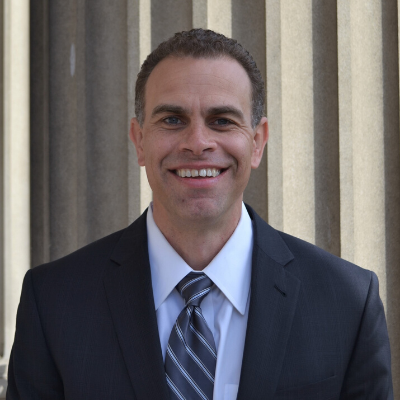
Khari Brown: It’s not too late to fulfill the promise of Brown v. Board of Education
In 1954, my father was one of the first Black students to integrate McKinley Technical High School in DC. There, he received an education of a far higher quality than he ever would have had otherwise, enabling him to become the first college graduate in his family and to provide economic security and opportunities for future generations of our family. As we reflect on the recent 70th anniversary of Brown v. Board of Education, it’s disheartening to see that countless schools in DC and around the country are once again functionally segregated.

The consequences of Brown v. Board didn’t even really take shape in many areas until the 1960s, when court-ordered desegregation accelerated progress. In 1968, 77% of Black students in the U.S. attended majority nonwhite schools. That number improved over several decades, but then momentum shifted: As of 2018, it stood at 81%. In the years since integration efforts peaked in the late 1980s, racial segregation has increased by 64% in the 100 largest school districts in the country. Education has long been touted as the answer to inequality, but without true integration, it can’t begin to live up to that ideal.
De facto segregation is not a recent development in DC or elsewhere. My father and his fellow Black classmates experienced it over the course of their four-year tenure at McKinley Tech, where their enrollment triggered an exodus of white students. By the time my father graduated in 1958, McKinley Tech was just 20% white. Today, enrollment at what is now known as McKinley Technology High School is 83% Black, 12% Hispanic/Latino, 4% white, and 1% multiracial.
Black students today are well aware that the goals of Brown v. Board — and the civil rights movement as a whole — have not been fully realized. One of the young adults involved with Spark the Journey, the mentorship nonprofit that I lead, told me she believes we still have a long way to go.
“I’m not typically around other people that are different from me,” said Janiya, a senior at McKinley Tech. “I grew up with a lot of Black African Americans. We had to go through so much to get to where we are today. And yes, we’ve gathered resources so that Black African Americans can thrive and get somewhere in life. However, faced with experiences of racism and inequality, we still must persevere.”
As a nation, we can’t afford to give up on the promise of Brown v. Board. De facto segregation is harming Black students and perpetuating racial inequality, which hurts society at large. One landmark study, which followed Black children well into adulthood, found that Black students who attend integrated schools generally experience higher educational attainment, higher incomes, and better health outcomes later in life — all areas in which Black communities are typically at a disadvantage compared to white ones. Another study has demonstrated that forming friendships across socioeconomic barriers — a characteristic of so many interracial friendships in a city and country where the racial wealth gap is so vast — is a strong predictor of economic mobility.
Of course, integration benefits all students, not just those from historically underrepresented communities. Research has shown that all students in integrated schools perform better academically, have fewer racial biases, and develop stronger problem-solving skills.
The promise of integration is real. We simply need to fulfill it.
So what’s stopping us? The answer lies in our own communities. Brown v. Board didn’t fundamentally change white families’ feelings about sending their kids to schools with a critical mass of Black students — it simply made it illegal to act on those feelings. Today, many families across the country continue to self-segregate by taking advantage of school choice, opposing affordable housing, and using school boards to manipulate zoning patterns and work around the parameters of Brown v. Board. Courts have supported them by lifting desegregation orders and paving the way for the resegregation we see today.
To reverse this trend, we need to double down. Yes, parents deserve a say in their children’s education, but not at the expense of an equal public education for all. Researchers at Stanford University and the University of Southern California recently released a new report that explores the rise in school segregation, and they note that school districts can make meaningful improvements by enacting student assignment and school choice policies that explicitly combat segregation. Those are critical steps that we must start taking today.
I would add that in DC, school segregation is intricately entwined with housing segregation and the racial wealth gap. The best schools are almost exclusively west of Rock Creek Park, which is also where white, wealthy families are concentrated. The most efficient way to meaningfully reduce school segregation would be to invest in affordable housing in neighborhoods that are already home to top-performing schools. White families have traditionally resisted this. But just because it’s politically unpopular doesn’t mean we shouldn’t try.
Having worked with Black and Brown young adults from low-income communities for 23 years at Spark the Journey, I have seen firsthand how talented and ambitious these young people are. But obstacles like segregated schools are preventing them from achieving their full potential. We owe it to the next generation to finally get this right.
Khari Brown is CEO and president of Spark the Journey.
About commentaries
The DC Line welcomes commentaries representing various viewpoints on local issues of concern, but the opinions expressed do not represent those of The DC Line. Submissions of up to 850 words may be sent to editor Chris Kain at chriskain@thedcline.org.


Comments are closed.